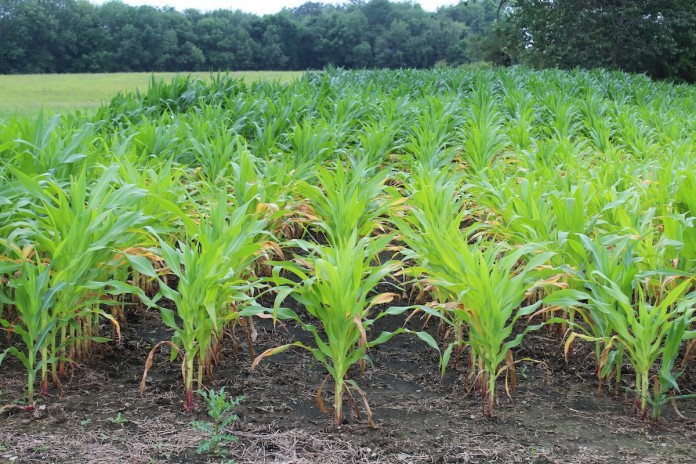Market observers and U.S. Department of Agriculture specialists continue to have different ideas about the size of this year’s corn and soybean crops. USDA came out with its grain stocks report last week, which included current estimates of the crop. As expected, they just used the National Agricultural Statistics Service numbers from the end of the month and did not bring them closer to reality.
Corn report
As mentioned last week in this space, the government surveyed farmers June 1, and they apparently were still hoping to get corn planted. So, the NASS numbers did not reflect the fact that planting was not finished.
It includes acres that are actually declared to prevented planting. Prevented planting acres will not actually be in the report until September.
To make things worse, the government number crunchers assumed the same previous yields, regardless of the late planting. They had cut the yield ten bushels per acre to 166, but that number is fantasy to anyone who has actually toured the Midwest.
So, USDA is now saying we will see almost 14 billion bushels of corn. That is, frankly, impossible.
The reality is that maybe 87 or 88 million acres got planted, not the 89.1 the USDA reported. A lot of that will be abandoned to crop insurance claims and never harvested. The crop is easily a billion bushels over-estimated.
Soybean report
The soybeans also have suspect acres. USDA says we planted 89.2 billion acres, with a 51.6 bushels per acre yield.
There is this myth that the beans planted in June are OK. The reality is that much of the yield gains of the past few years is from planting in May, and even late April.
Our yields are likely to be five or six bushels per acre less than the current USDA numbers.
Making this market hard to deal with are three things.
Crop assessments
First, the farmer needs to make an assessment of what his crop will be. This is hard, with few really bad years to compare it with. It is likely that the farmer needs to forward contract crops that he is uneasy about actually getting in the bin in order to lock in good prices.
A volatile market
Second, the farmer needs to deal with the volatility of the market.
“Volatility” is a measure of how much the market moves over time. It is the reason option quotes are expensive, because volatility is about risk of price movement. The market is volatile now, and remains so, as every change in weather report affects market outlook, and because every day brings us closer to more and maybe better estimates from USDA.
Many unknowns
Third, marketing grain is hard to manage because there is such a large range of ideas of the crop size we actually end up with nationally.
We could see a huge boom late in the summer and into harvest as the market realizes the crop is vastly over-estimated. Or, that rally could never come, as traders trade the USDA numbers and the crop improves dramatically on the current warm temperatures.
Interestingly, the warm weather that was seen as good for the crop, and certainly was good around here, is now seen to be bad. Current thinking is that we are getting too hot (near 100 degrees in the western Corn Belt this week, 98 degrees projected in northeast Ohio) and too dry.
Price changes
However, prices crashed yesterday on the idea that the temperatures were going to be cooler and dryer — and that was good for the crop.
Prices moved sharply higher last week, then lost the gains.
December corn futures are at $4.39 3/4 as of early July 16, down over 7 cents. They have been as low as $4.20 3/4 July 1 and as high as $4.68 at the end of June.
November soybean futures are trading at $9.08 1/2, down over 11 cents. They have been as low as $8.90 1/4 July 9 and as high as $9.48 in the middle of June.













